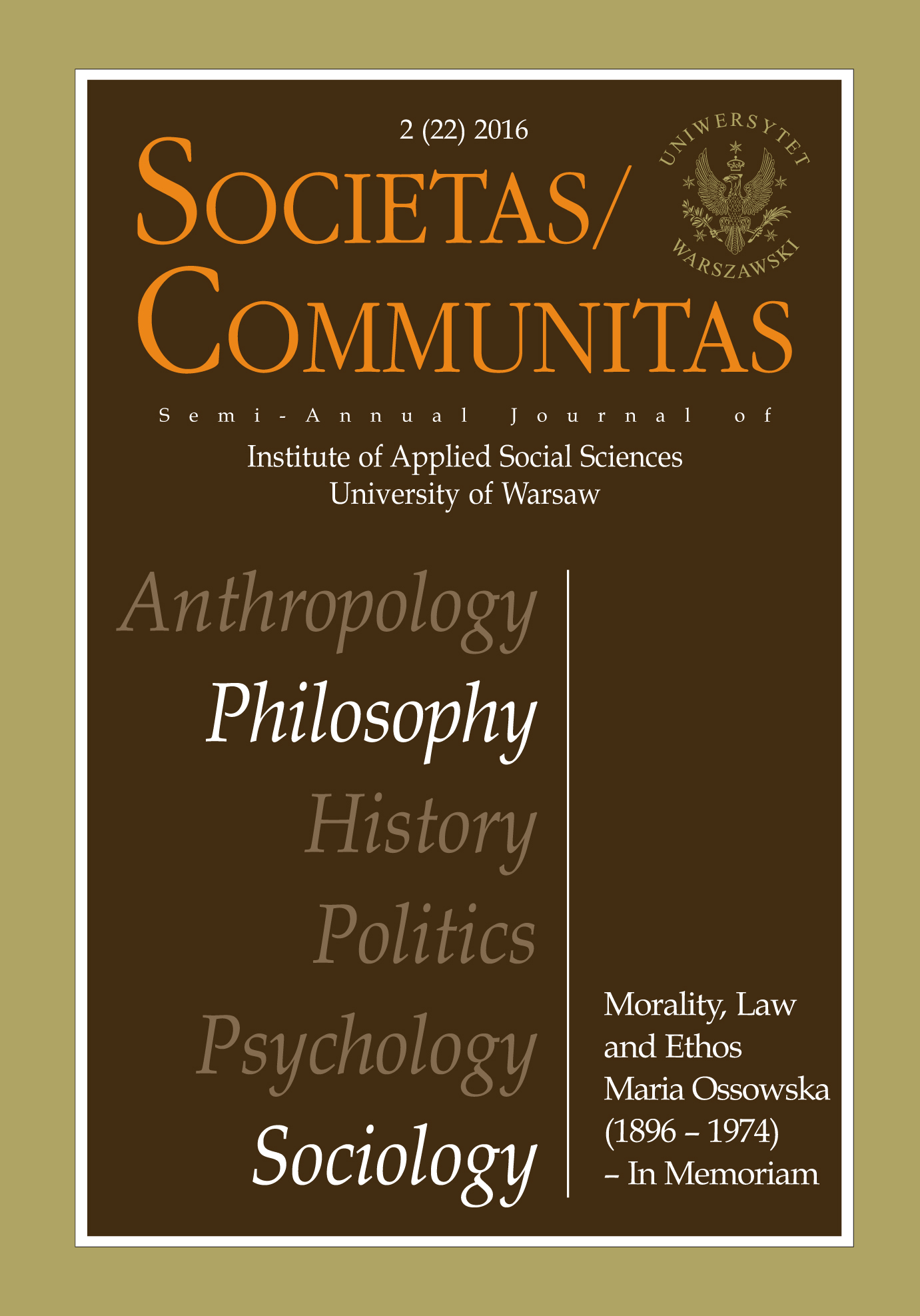What Concept of Morality for Sociology of Morality? From Ossowska's Rejection of Substantive Definitions to a Formal (Psychoanalytic) Cross-Disciplinary One
What Concept of Morality for Sociology of Morality? From Ossowska's Rejection of Substantive Definitions to a Formal (Psychoanalytic) Cross-Disciplinary One
Author(s): Edoardo FittipaldiSubject(s): Sociology
Published by: Instytut Stosowanych Nauk Społecznych Uniwersytetu Warszawskiego
Keywords: Maria Ossowska; Pierre Bourdieu; Leon Petrażycki; Psychoanalysis
Summary/Abstract: Ossowska contended that it is impossible to give a coherent definition ofmorality but at the same time she refused to adopt a stipulative definition forit. In § 1 the author illustrates Ossowska’s official attitude towards stipulativedefinitions. In § 2 he shows that Ossowska was not always consistent with herprogramme of abstaining from using stipulative definitions. In § 3 the authorasks whether Ossowska’s rejection of stipulative definitions of morality can besomewhat compared with Bourdieu’s concept of illusio. In § 4 the author contends that Ossowska’s failure in finding satisfactory descriptive definitions formorality is to be explained by her searching exclusively for substantive definitions. The author argues, instead, that a formal definition for morality can begiven. Such a proposal was first made by the Polish scientist of law and morality, Leon Petra¿ycki, who provided a purely formal definition for both, and hisdefinition is compatible with the findings of psychoanalysis in this regard. ThusFittipaldi proposes a Freudian-Petra¿yckian stipulative definition of a moralevaluation as an evaluation backed by a superegoic emotion. Superegoic emotions may be addressed to virtually whatever object (hence the formal natureof the definition) and all of them stem from the archaic helplessness of thechild via-à-vis his caregivers—caregivers whom the child at once loves, fearsand admires. According to the author, this definition is heuristically fruitfuland makes it possible to cover all the areas that according to Ossowska shouldbe investigated by her science or sociology of morality.
Journal: Societas/Communitas
- Issue Year: 2016
- Issue No: 22 (2)
- Page Range: 185-220
- Page Count: 36
- Language: English

